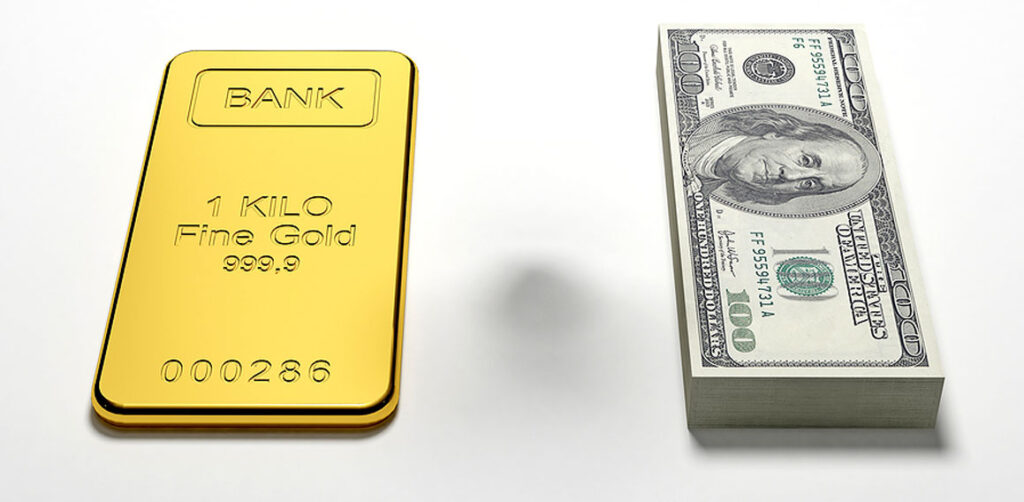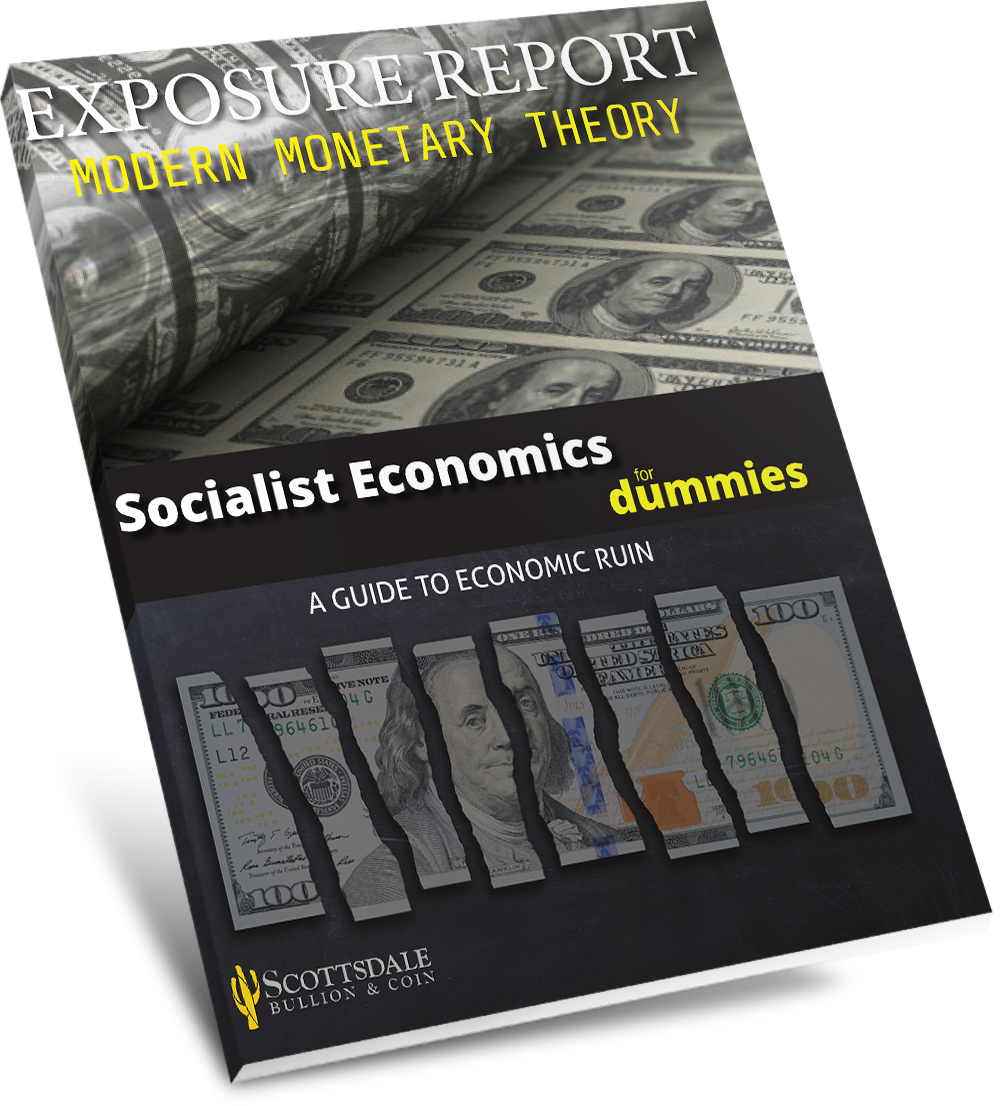 Economic experts point to the flexibility and growth possible within a fiat system while others highlight the long-term stability and certainty offered with a currency that is backed by gold. The debate is interesting for economic scholars and, governments have experimented sufficiently with both systems, which can make it easier to evaluate the benefits of each financial model.
Economic experts point to the flexibility and growth possible within a fiat system while others highlight the long-term stability and certainty offered with a currency that is backed by gold. The debate is interesting for economic scholars and, governments have experimented sufficiently with both systems, which can make it easier to evaluate the benefits of each financial model.
What is fiat currency?
Fiat currency is government-issued money without any physical backing such as gold or silver. The only value fiat money derives is from a government’s designation of its use as legal tender. As a result, a fiat-based system is wholly dependent upon the fiscal policies of the issuing government and the public’s trust in those systems.
In Latin, the term fiat means “it shall be” or “let it be done”, often referring to a whimsical command from an authority. This meaning is mirrored by the fact that fiat currency only has value because the government says so. Today, all countries base their economies on a fiat currency, but it’s a relatively recent phenomenon that boomed in the late 20th century.
For example, the in the United States, dollars – officially known as Federal Reserve notes -aren’t redeemable for any commodity which means the notes do not have an inherent value. This leads many critics to disparagingly refer to fiat currency as fake money.
Advantages of Fiat Currency
Flexibility
One of the most popular arguments in favor of fiat currency is the flexibility it offers governments. While commodity-backed money would place a cap on spending, fiat currency isn’t bound by any resource limitations. This gives central banks virtually unlimited financial resources, which is handy when the government needs funding for economic downturns, natural disasters, armed conflicts, and other costly challenges.
Policy Control
Enhanced government control is another purported benefit of a fiat money system. With an untethered currency, financial authorities have tools to control the economy such as interest rates, exchange rates, and money supply. Theoretically, these levers give the government more influence over the trajectory of the economy which translates to more security and stability.
Considerations of Fiat Currency
Overprinting & Overspending
Perhaps the most concerning downside of fiat currency is the risk of overprinting. Since fiat currency isn’t bound to any limited commodity, governments have the power to print as much money as they want. One could argue that this promotes a misguided notion that problems can be solved by throwing a bunch of money at them.
High Inflation
Fiat currencies are inherently more susceptible to inflationary pressures than their fixed counterparts. The inevitable result of excessive printing and spending is currency devaluation as an oversupply of money reduces its value. This is such a prominent and common fixture of modern fiat-backed economies that an annual inflationary rate of 2% is considered healthy.
Debt Accumulation
Debt accumulation is another major pitfall of fiat currency. The ability of governments to lower borrowing costs through decreased interest rates can create an incentive to rack up more debt. In simple terms, this creates a positive feedback loop encouraging more borrowing and larger deficits. It’s shockingly common for countries to hold insane amounts of debt within fiat currency systems. In fact, according to the United Nations, over 52 countries are operating in serious debt.
What is the gold standard?
The gold standard is a monetary system wherein the value of a country’s currency is backed by gold. Under this system, government-issued currency is exchangeable for a certain amount of gold at a fixed conversion rate. Paper money within a gold standard system operates nearly identically to that of a fiat currency system, with the critical distinction of gold-backing.
👉 Related reading: The Gold Standard: Everything You Need to Know
Human economies have been backed by gold throughout history. In fact, in the early 1900s, the gold standard was still the dominant system for most countries and in the global economy. That was until President Richard Nixon abandoned the gold standard in 1971 due to a convergence of pressures including raging inflation and tightening gold reserves.
Advantages of the Gold Standard
Economic Stability
When a currency is anchored to a physical commodity with inherent value, the economy is more stable and predictable. The supply of gold grows at a relatively slow and consistent pace which translates to steadier currency prices. Furthermore, a naturally constrained money supply instills confidence in consumers, investors, and businesses which promotes healthy growth. A gold standard can’t eliminate inevitable market ups and downs, but the volatility is significantly mitigated.
Fiscal Discipline
The majority of fiat currency failures derive from financial mismanagement at the federal level. The gold standard succeeds at removing human error from the equation by imposing restrictions on how much governments can print and spend. These financial guardrails compel leaders to operate within their means, exercise fiscal sustainability, and avoid excessive debt, resulting in long-term stability and a healthy economy.
Convertibility
Within a gold standard system, citizens can freely convert government-issued currency into physical gold at will. The exchange rate can vary based on economic and geopolitical factors, but there’s an underlying promise of convertibility. This gives investors the flexibility to increase their gold holdings in anticipation of economic uncertainty and reinforces the stability of the monetary system.
Considerations of the Gold Standard
Limits on Growth
The primary argument against the gold standard is its constraints on growth. Since the earth has limited gold supplies, gold-backed currencies are automatically confined to a certain level of appreciation. Governments have worked around this limitation in the past by changing the price of gold per ounce to reflect economic growth. However, too many adjustments render the gold standard meaningless.
Policy Constraints
Another area where the gold standard falls short is policy constraints. Pegging a currency to gold doesn’t leave fiscal leaders with much flexibility. Excessive government intervention in the economy has negative repercussions, but some argue there are times when greater control is necessary. The US government’s first moves away from the gold standard through Executive Order 6102 were actually motivated by the economic complications of the 1930s.
The Performance of Fiat Currency vs. Gold Standard
The world has dabbled in both fiat currency and the gold standard long enough for an accurate comparison of the economic effects of each monetary system. Let’s take a look at three key economic metrics to gauge the performance of these disparate financial structures.
Debt – When the US officially abandoned the gold standard in 1971, the country’s debt stood at $23.2 billion. That’s $175 billion when adjusted for inflation. Under the current fiat system, national debt has skyrocketed to over $34 trillion with no signs of slowing down.
Value – In terms of relative value, gold has far outperformed the US dollar. Since being divorced from any backing, the greenback has lost 99% of its value when compared to gold. That’s a tremendous amount of decline for the world’s reserve currency.
Inflation – Gold as a commodity has proven to keep pace with inflation as opposed to fiat currency. In 1971, the average inflation rate in the United States was 4.29%, while in 2022 the inflation rate was 8%. So the US dollar is losing value each year, while the price gold is keeping pace.
A Return to the Gold Standard?
The current state of the fiat currency system has many people calling for a return to the gold standard. Tragically, restoring the gold standard is no longer plausible. The inflationary side effects of fiat currency have ballooned the US economy far beyond the point of no return.
The numbers are painfully clear. Currently, America’s gold reserves – the largest in the world – stand at 8,133.53 metric tons which is worth over half a trillion dollars with today’s gold price. That might seem like a decent amount, but the government’s flagrant spending habits dwarf it. There’s simply not enough gold in the world to back our free-floating markets.


